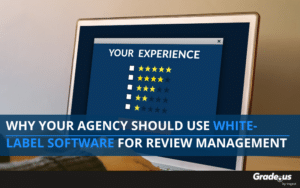How do you get competitors to do it? Why would they help you build your client roster?
How do you get competitors to send an avalanche of referrals to your local search agency? Is that even possible or is it simply a case of wishful thinking?
It's real and it's doable.
This sounds incredible (and it is) but you need to have a fair amount of structure in place first. The structure is key as it provides you with the boundaries, protection, terms and conditions you need to make this work.
It starts with a wall.
Does your agency use the Brewer and Nash model to build your client roster?
Some agencies do.
The vast majority of agency practitioners are familiar with the Brewer Nash model but for the sake of clarity let's define our terms.
Wikipedia defines the Brewer Nash model as...
"an information barrier within an organization that was erected to prevent exchanges or communication that could lead to conflicts of interest."
Larger ad agencies do their very best to convince their clients that there will be no conflicts of interest. That they have a mechanism that enables them to serve competing clients. The claim is that this model prevents a conflict of interest. It also prevents the sharing of client trade secrets, confidential information and/or sensitive data.
How do clients feel about it?
John Taylor, VP of public affairs and communications at LG, provides a client's perspective.
"I know from experience, agencies are very fluid environments. Young people moving up in their careers switch from one account group to another. Client updates are delivered at staff meetings. Management meetings review strategy, weighing one client's prospects against another's.
And if you're a global client of a firm – as is the case with LG Electronics – then the challenges of preventing sensitive planning and strategic information accidentally crossing conflict-management boundaries become even more complex."
The vast majority of clients feel the same way Taylor does.
They don't like it.
They don't want to deal with a conflict of interest. Most of them have competitors or rivals. Some of these rivalries are bitter and intense (Coca-Cola versus Pepsi, Marvel versus DC). In these scenarios, co-mingling is strictly forbidden.
That's the problem though, isn't it?
Let's say you're willing to accept competing clients. How do your clients know you won't take on a hated rival? It really requires trust, doesn't it.
That's a big ask.
Your agency may guarantee transparency but your clients never really know for sure.
How the Brewer Nash model affects your agency
Your local search agency needs to draw a hard-line on this issue.
No compete.
You won't be able to work with your competitors to build your client roster if they're willing to take on competing clients. Your agency and referring competitors should have a strong no compete policy in place. No Brewer Nash, no conflict of interest.
It's a nonnegotiable anchor point.
This is why competitors will work with you. If you're both reasonably confident you can trust each other and you're sure there won't be any client poaching, you can do business. So how do you do it? How to attract referrals from your competitors?
You make a list.
You create a yay or nay list. A set of criteria you can use to qualify or disqualify potential referral partners.
- Agencies that focus on a particular niche or specialty (e.g. outdoors, e-commerce) nay
- Agencies with a Brewer Nash model nay
- Agencies with portfolio of clients who are similar or identical nay
- Agencies with a diverse client roster yay
- Agencies with a strict “No Compete” policy yay
- Agencies with a strong reputation, solid review portfolio (i.e. five star aggregate rating across multiple review platforms) and a focus on results yay
These are nonnegotiable.
It's important that both you and your competitors meet the criteria set in the yay or nay list. It's a deal breaker if either party is unwilling to accommodate. Both of you absolutely need these details in order to work together safely and effectively.
Next, create a list.
You'll want to create a list of 15 to 30 competitors. These competitors should be similar or slightly bigger (1/3) in size than your agency.
Here's how you get competitors to work with you and build your client roster
You profile your competitors.
Remember the giver profile I mentioned in my previous post? We're going to use the same data in our analysis here to identify outstanding referral partners.
Here's a quick recap.
1. Givers give with no strings attached and no expectation of return. Otherish givers are smart about when and how they give.
2. Matchers preserve balance. If you give, they give. If you take, they take.
3. Takers are focused on themselves. They take without giving until there's nothing left to receive.
Know what comes next?
That's right, you're going to seed the competitors in your list with referrals. If you ask for a favor right from the get-go you're going to be classified as a taker.
And rightfully so.
If you'd like to start the relationships with your competitors off on the right foot, focus your attention on one thing.
Giving.
Here's the thing about your giving, it has to be the right kind. Give to get and your competitors will see right through you. This strategy won't work, it has to be genuine. Unsure about your giving profile?
Next, visit your competitor's website, run Google searches for their brand terms. You're looking for three specific things:
1. Advertising. You want to see that the competitors in your list are investing in themselves. They're spending their time and money on platforms like Facebook, Google or retargeting ads.
2. Marketing. Are they guest posting? Active in industry-specific forums, or Q&A sites? Giving speeches in the community? You want to see that they're working hard to move the needle in some way.
3. Partnerships. Are they consistently featured on high traffic, authoritative or influential sites? Are the listed or registered as a thought leader? Are they consistently putting out high quality content?
Any one of these is good. Two or more is best.
Profiling your competitor as a giver or matcher means they're far more likely to reciprocate. Reciprocation = leads. Remember, what you put in is what you get out. If you want high quality leads from your competitor sources train them.
How do you do that?
You provide them with high quality leads first. Warm-up prospects. Give them (a.) A compelling reason why you can't work with them (b.) A compelling reason why they should work with your competitor and (c.) A strong incentive to do so.
You can either prep competitors ahead of time by:
- Stating that you’d like to provide them with a steady supply of leads or
- Providing them with leads first, promising more, then negotiating afterwards
How does this turn into leads?
If you've profiled your competitors as a giver or matcher you have your answer. Give with zero expectation of return and these two givers will feel the pressure to reciprocate.
What can you give?
- Fresh, high quality leads. Work to maintain a 5:1 ratio. Give continuously, share five times as often as your competitors.
- Connections. Provide your competitors with connections to important platforms, influencers and thought leaders. Build their business as if it were your own.
- Access to free trials, exclusive deals and helpful incentives
Why would you bother to do all of this if you're expected to maintain a 5:1 ratio?
You're creating a tree.
In the beginning, you'll need to feed your clients with the nutrients, the leads and resources they need. If you're following the same criteria we've laid out for your competitors you're already promoting your business. You're already bringing in a consistent stream of leads.
There's a good chance you're attracting duplicates.
These duplicates provide you with the opportunity you need to create significant value for your competitors. Eventually the value tree you've created will begin to bear fruit, throwing off a significant amount of leads, clients and revenue.
But, it starts with your overflow.
What if you're cheated?
What if your competitors cheat you? What if they decide to give in the beginning then suddenly morph into takers? It's always a possibility. But there's a simple way to prevent this unpleasant possibility.
Trust but verify.
Monitor your competitor's portfolio. Ping their business from time to time. Verify that their no compete policy is still intact.
The Brewer Nash model is a no go
Agencies do their very best to convince clients that Brewer Nash will prevent a conflict of interest. That it's a way to prevent the sharing of trade secrets, confidential information and/or sensitive data.
Most clients don't like it.
Your competitors may guarantee transparency but you never really know for sure, do you?
Trust but verify.
You provide them with high quality leads first. Warm-up prospects. Give them (a.) A compelling reason why you can't work with them (conflict of interest) (b.) A compelling reason why they should work with your competitor (no conflict of interest) and (c.) A strong incentive to do so.
Profile your competitors.
Use your yay or nay list to qualify/disqualify likely candidates. Give without expectation and you'll find the getting comes automatically.
About the Author
Andrew McDermott
Andrew McDermott is the co-founder of HooktoWin. He shows entrepreneurs how to attract and win new customers.









